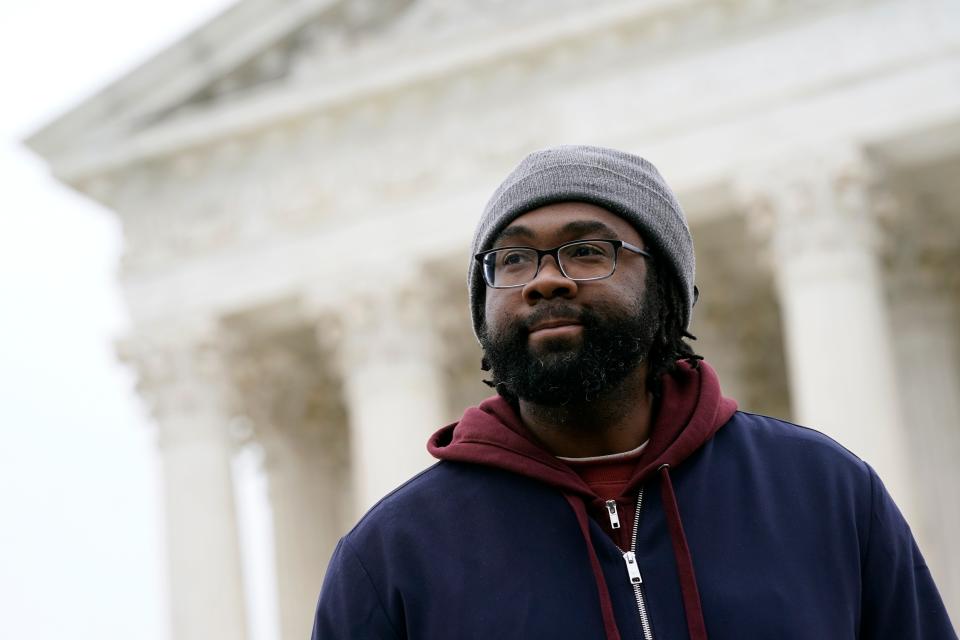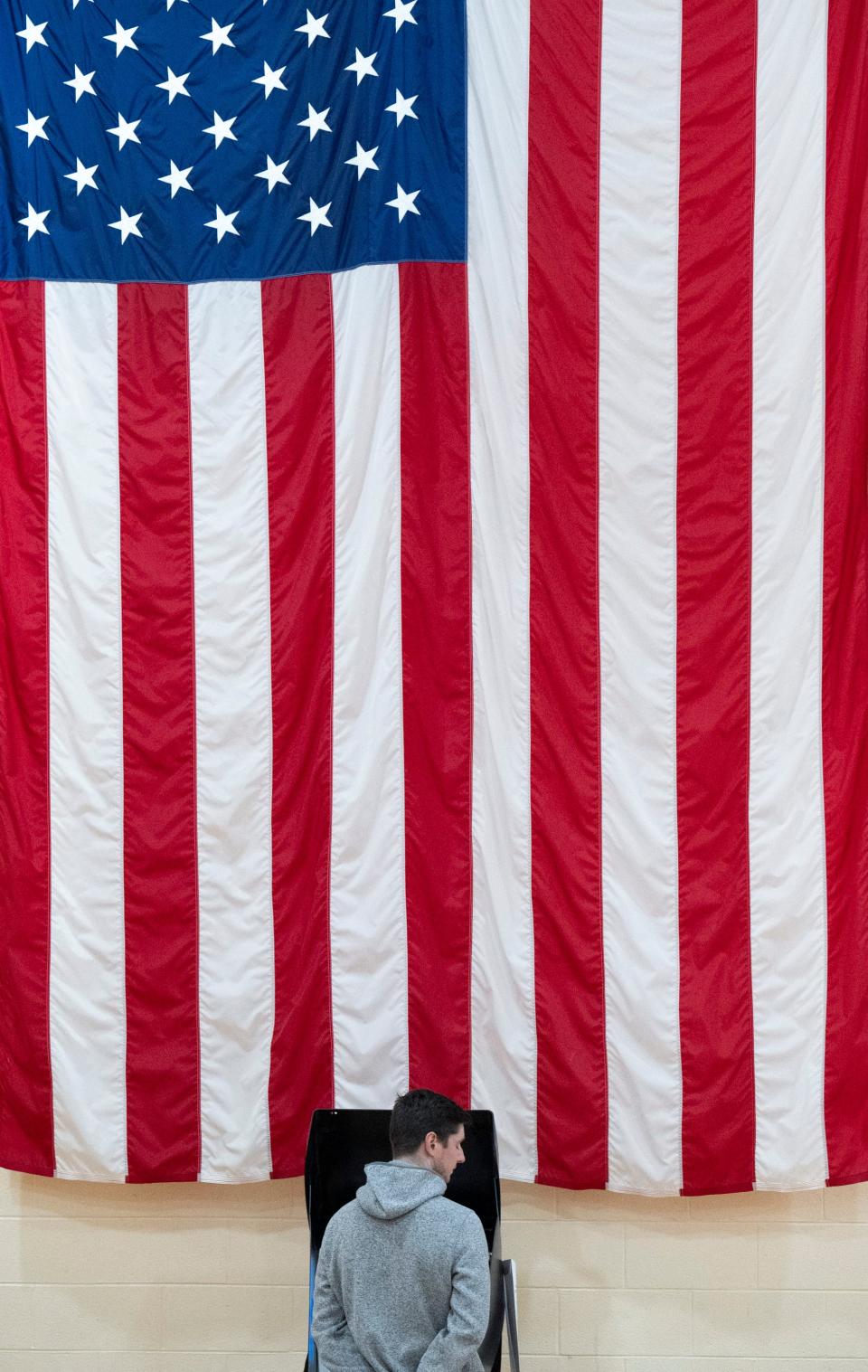Supreme Court rejects Alabama congressional map that diluted Black vote in surprise ruling
WASHINGTON – The Supreme Court on Thursday unexpectedly ruled against Alabama in a challenge to its recently redrawn congressional districts, smacking down an argument for "color-blind" boundaries that voting rights advocates feared could have significantly diluted the power of Black voters throughout much of the nation.
The 5-4 decision by Chief Justice John Roberts was a win for voting rights groups and a break with past decisions from the conservative court that have limited the scope of the landmark Voting Rights Act. The decision means states will have to remain mindful of the impact on race when drawing political boundaries.
Roberts' opinion, joined by the court's three-justice liberal wing and Justice Brett Kavanaugh, framed Alabama's argument that race shouldn't come into play in the decision-making as inconsistent with the court's precedents. The decision means the state will have to redraw the map it used in the 2022 midterm election, likely to include a second district made up of a majority of African American voters.

What the Supreme Court said in major voting decision
Roberts wrote that Alabama's argument that mapmakers must be "entirely 'blind' to race has no footing in our" earlier decisions. Instead, it's a more nuanced approach where states shouldn't let race be the primary factor in deciding how to draw boundaries but it should be considered. "The line that we have drawn is between consciousness and predominance," he wrote.
Justice Clarence Thomas, in a dissent joined by three other conservatives, said the court's decision laid bare the gulf between a "color-blind" Constitution and what he has described as the "consciously segregated districting system" in place today.
The question, Thomas wrote, is whether the Voting Rights Act "requires the State of Alabama to intentionally redraw its longstanding congressional districts so that Black voters can control a number of seats roughly proportional to the black share of the state's population."
The law, Thomas said, "demands no such thing, and, if it did, the Constitution would not permit it."

Why does the Supreme Court's voting decision matter?
The case was the latest to test the scope of the Voting Rights Act, the 1965 law intended to ensure African Americans are not discriminated against at the ballot box. The Supreme Court has weakened the reach of that law in a series of recent decisions at a time when voting itself has become an increasingly partisan issue.
It also is one of several major disputes the court is considering this term that deal with race and what efforts governments and other institutions must make to combat discrimination. Later this month, the high court is set to hand down another major opinion challenging the use of affirmative action in college admissions.
What was the Alabama redistricting case about?
At issue were the congressional boundaries Alabama lawmakers drew following the 2020 census that include 1 district out of 7 with a majority of Black voters. African Americans account for more than a quarter of the state's overall population.
Alabama told the high court that the once-in-a-decade changes to its previous districts were race-neutral and asserted that federal law shouldn't compel states to draw additional minority districts just because such districts were possible to draw. But the voters challenging Alabama's map said the state's interpretation of the Voting Rights Act would significantly undermine its purpose.
The case is Allen v. Milligan.
'Crucial win.' Voting group celebrate Alabama decision
The court's decision was a recognition of the Voting Rights Act's original purpose, said Legal Defense Fund senior counsel Deuel Ross, who argued the case in October.
"This decision is a crucial win against the continued onslaught of attacks on voting rights,” Ross said. “Because of the state's sordid and well-documented history of racial discrimination, race must be used to remedy that past and ensure communities of color are not boxed out of the electoral process."
Alabama Attorney General Steve Marshall, a Republican, offered a short statement calling the decision "disappointing" but asserting that "this case is not over."
Preserving the status quo on Voting Rights Act
In some states the redistricting process is governed by a nonpartisan body, but the endeavor is more often a political one – led by state lawmakers who seek an advantage for their party. The Supreme Court ruled in 2019 that federal courts would not get involved in disputes about partisan gerrymandering.
But racial gerrymandering is another matter, in part because of the Voting Rights Act.

A 1986 Supreme Court decision, Thornburg v. Gingles, sets forth how federal courts are supposed to determine when a congressional map violates the Voting Rights Act. Courts must first consider factors such as whether there is a majority group large enough and compact enough to make up a district. Plaintiffs also must demonstrate that white residents vote together cohesively enough to defeat a minority group's candidate.
Applying that standard, a three-judge federal court ruled against Alabama last year, concluding that the congressional map likely violated the Voting Rights Act. The court said it didn't regard the question of whether the maps violated the law "as a close one." Two of the three judges were nominated by a Republican president.
Responding to an emergency appeal last year, a divided Supreme Court allowed Alabama to use the map in the 2022 midterm elections while the litigation continued. Kavanaugh said that the ruling maintained the status quo ahead of what was then the state's upcoming primary elections.
Alabama has only one Black member of Congress: Rep. Terri Sewell, a Democrat.
This article originally appeared on USA TODAY: Supreme Court rejects Alabama map that diluted Black vote
